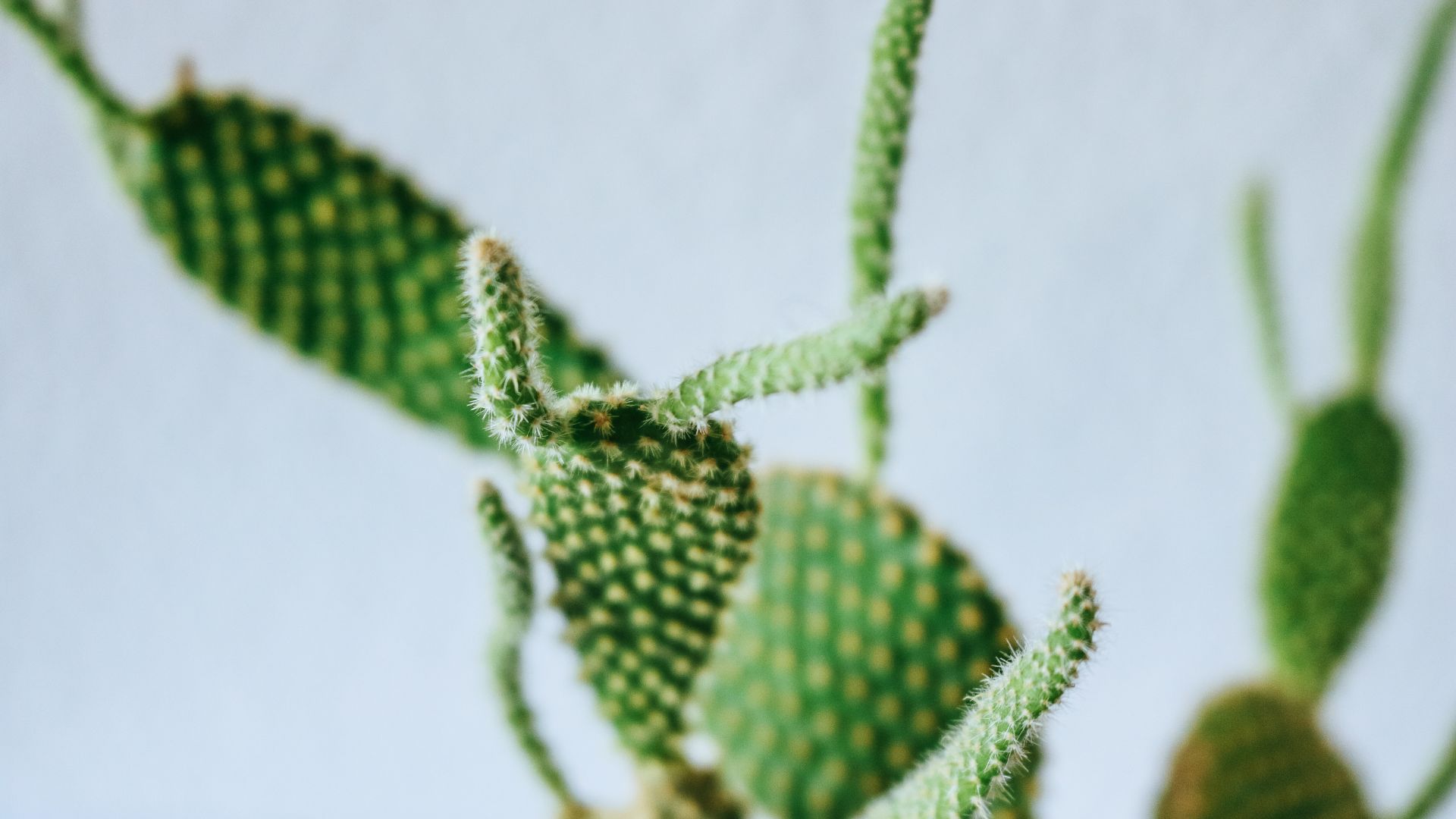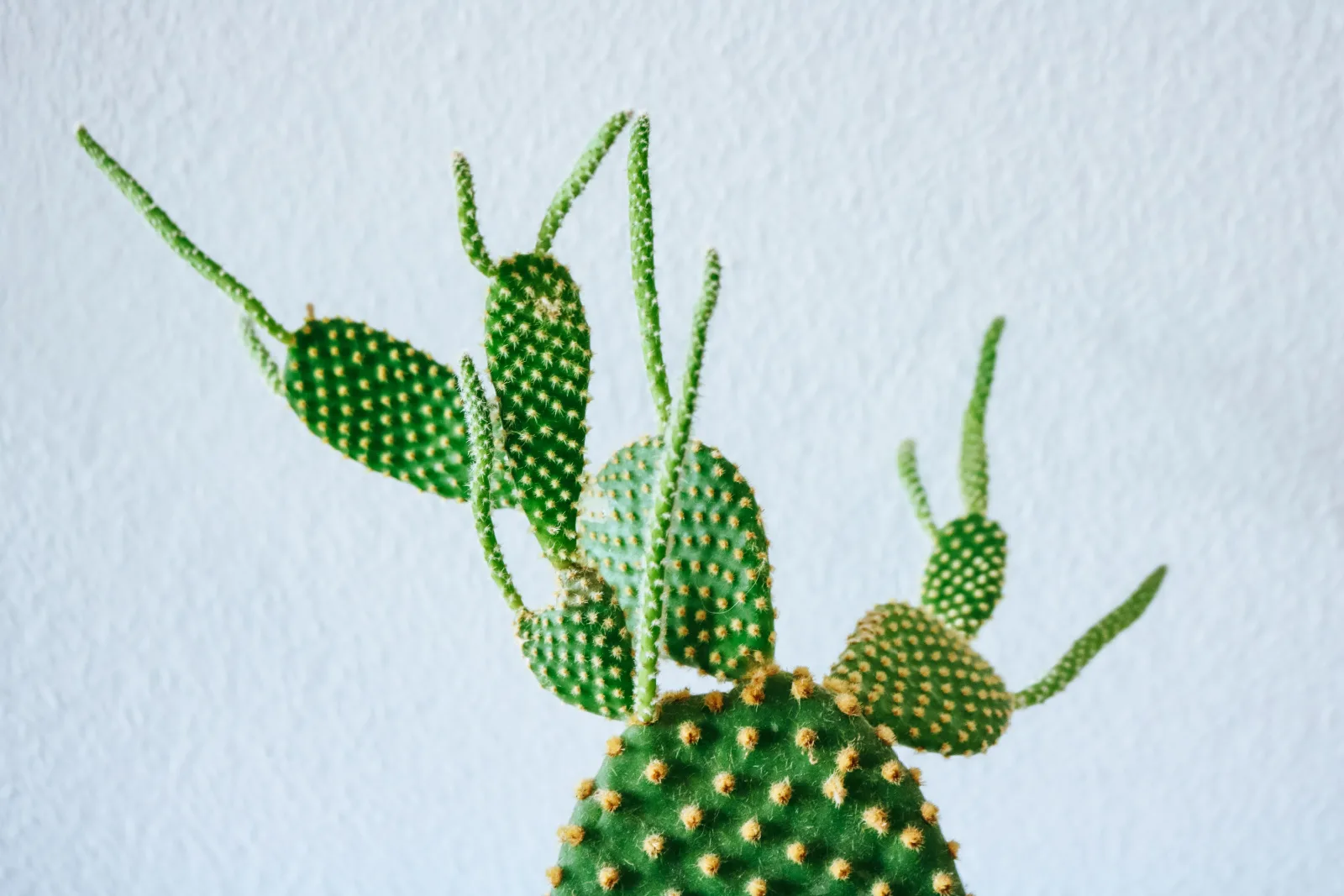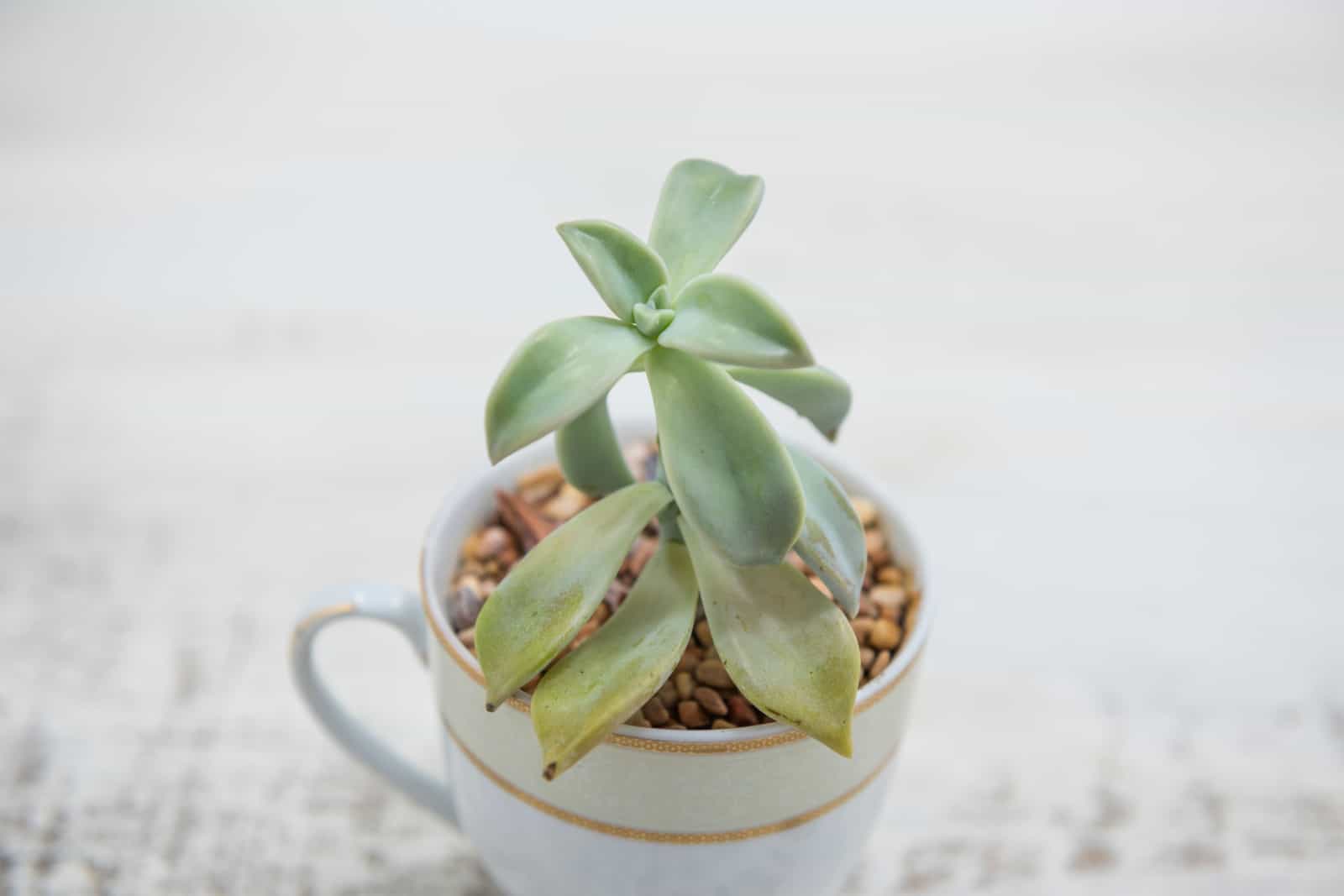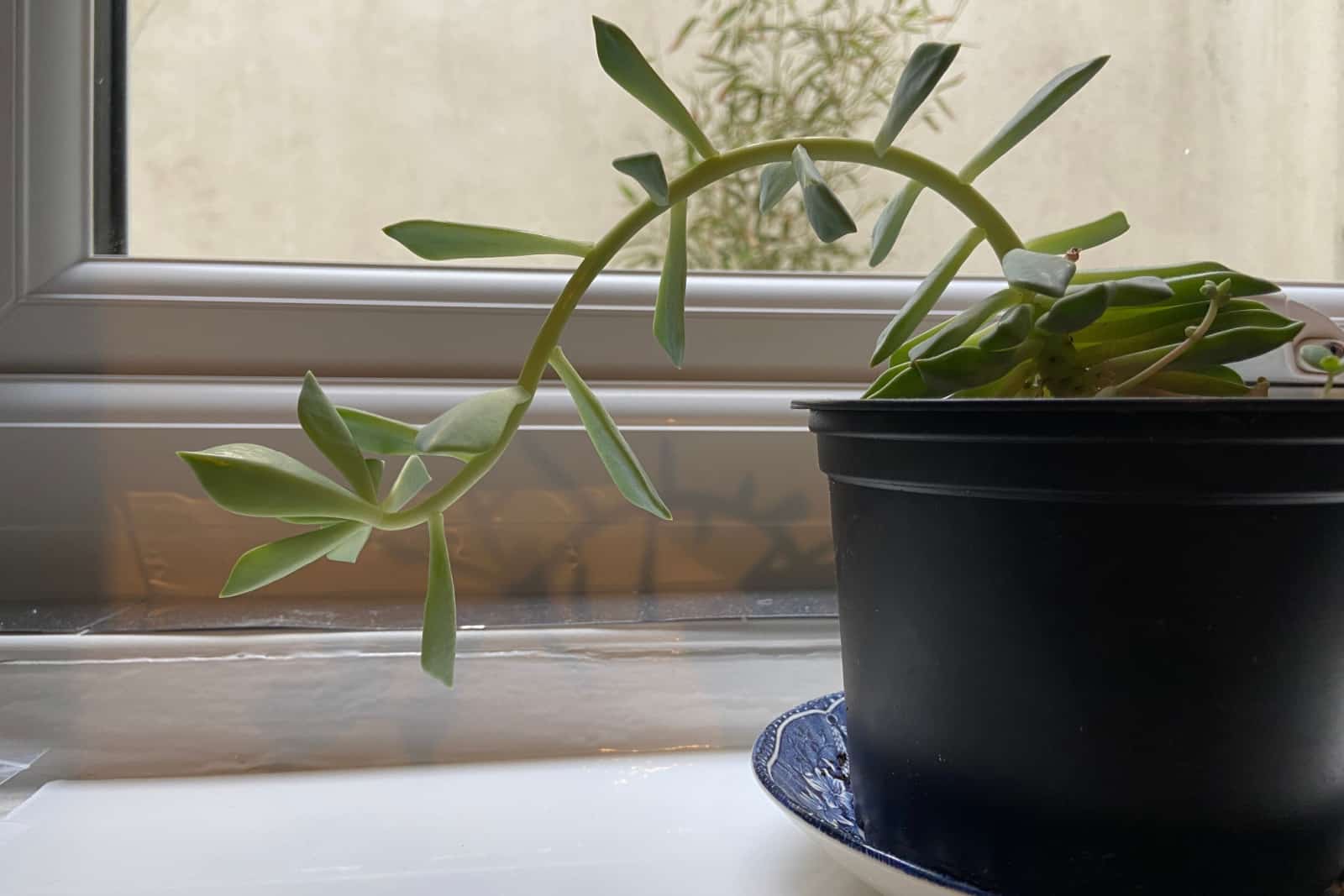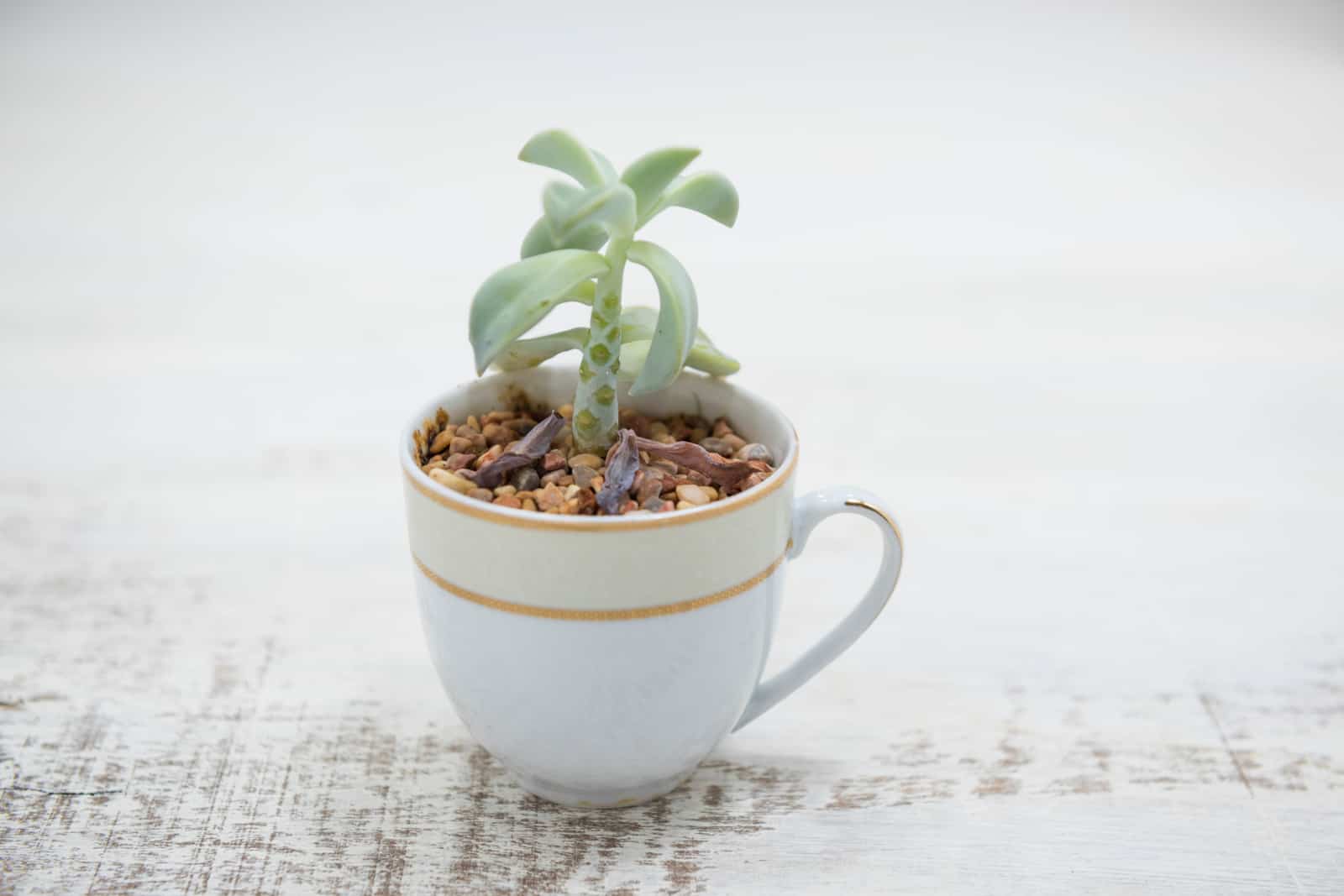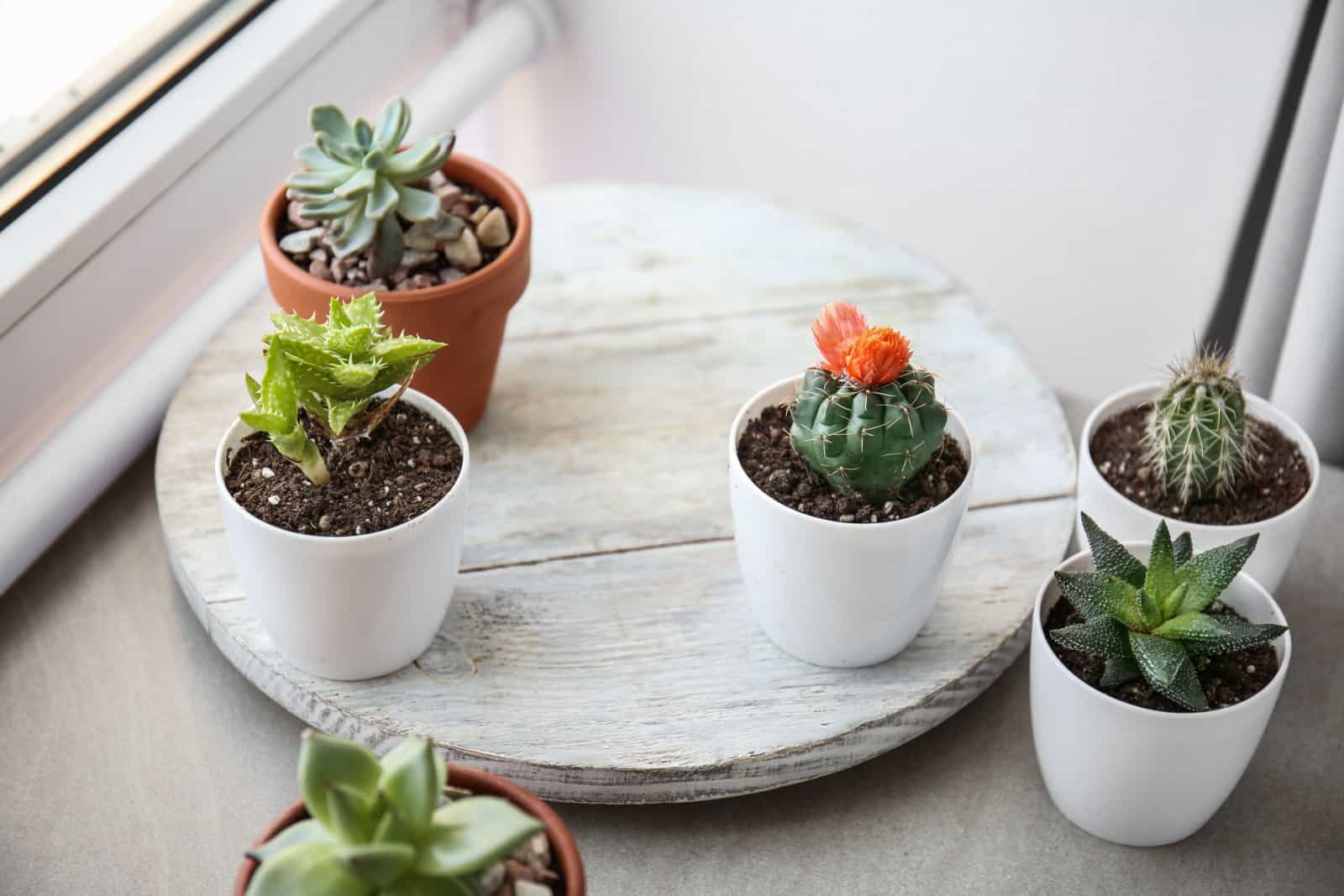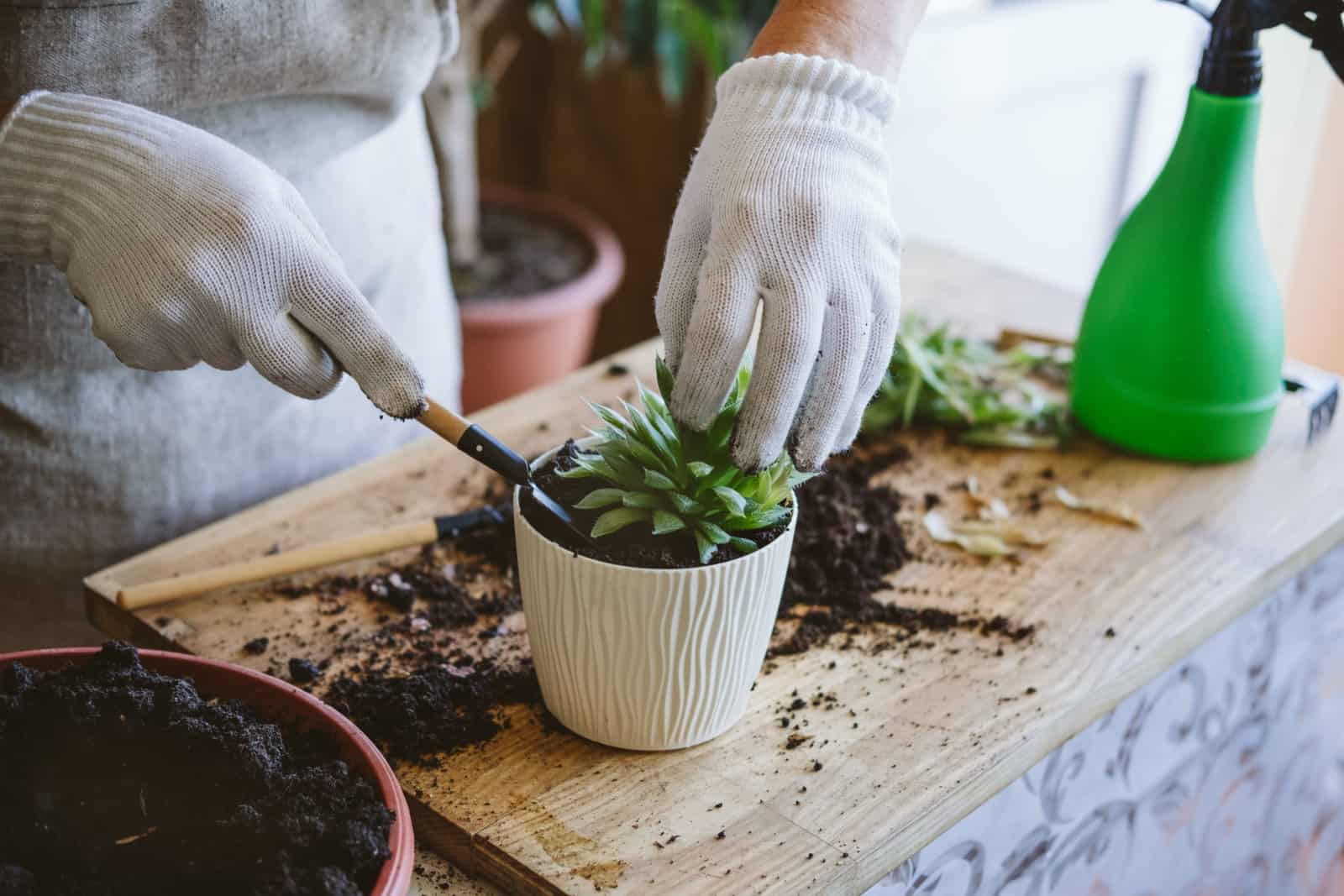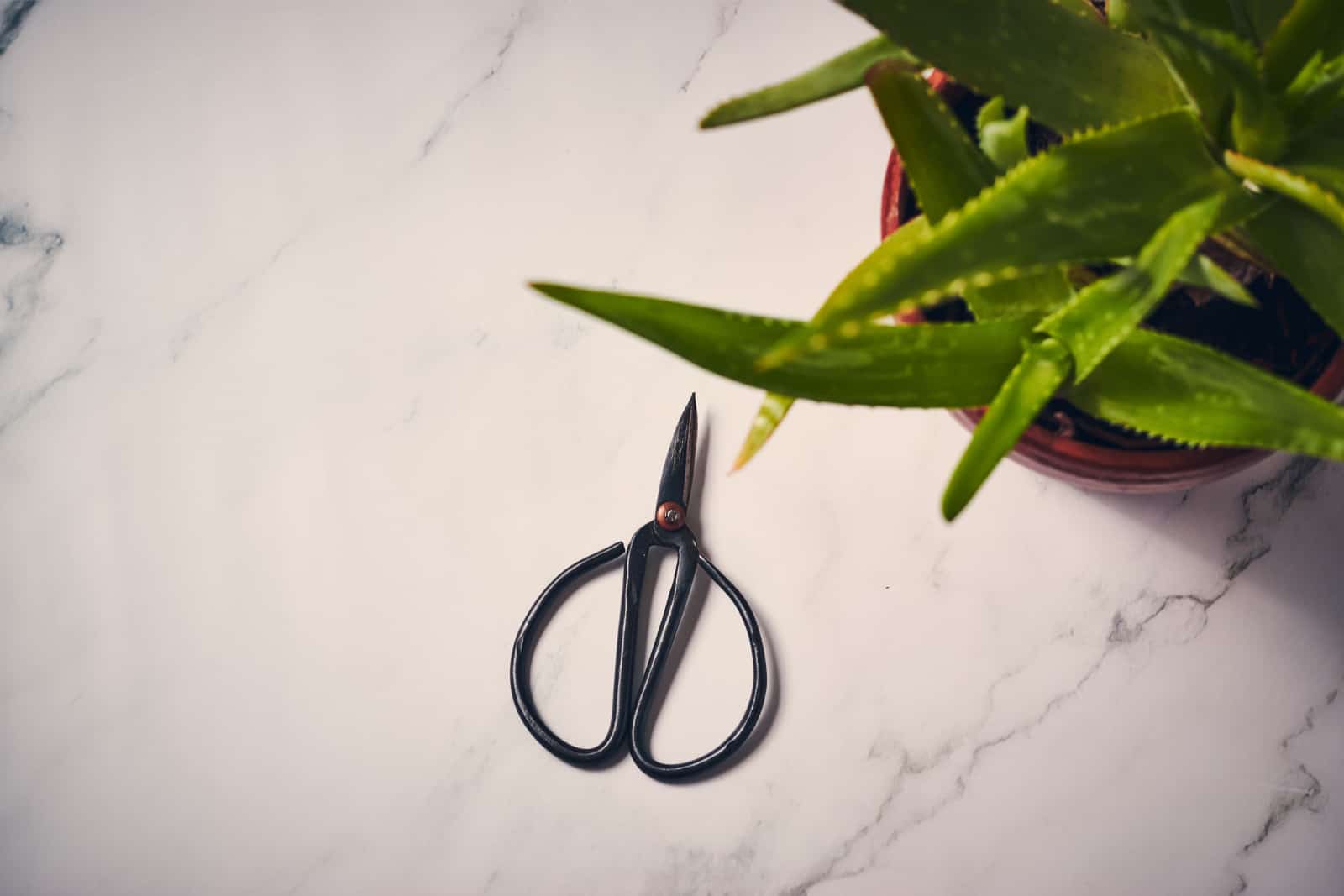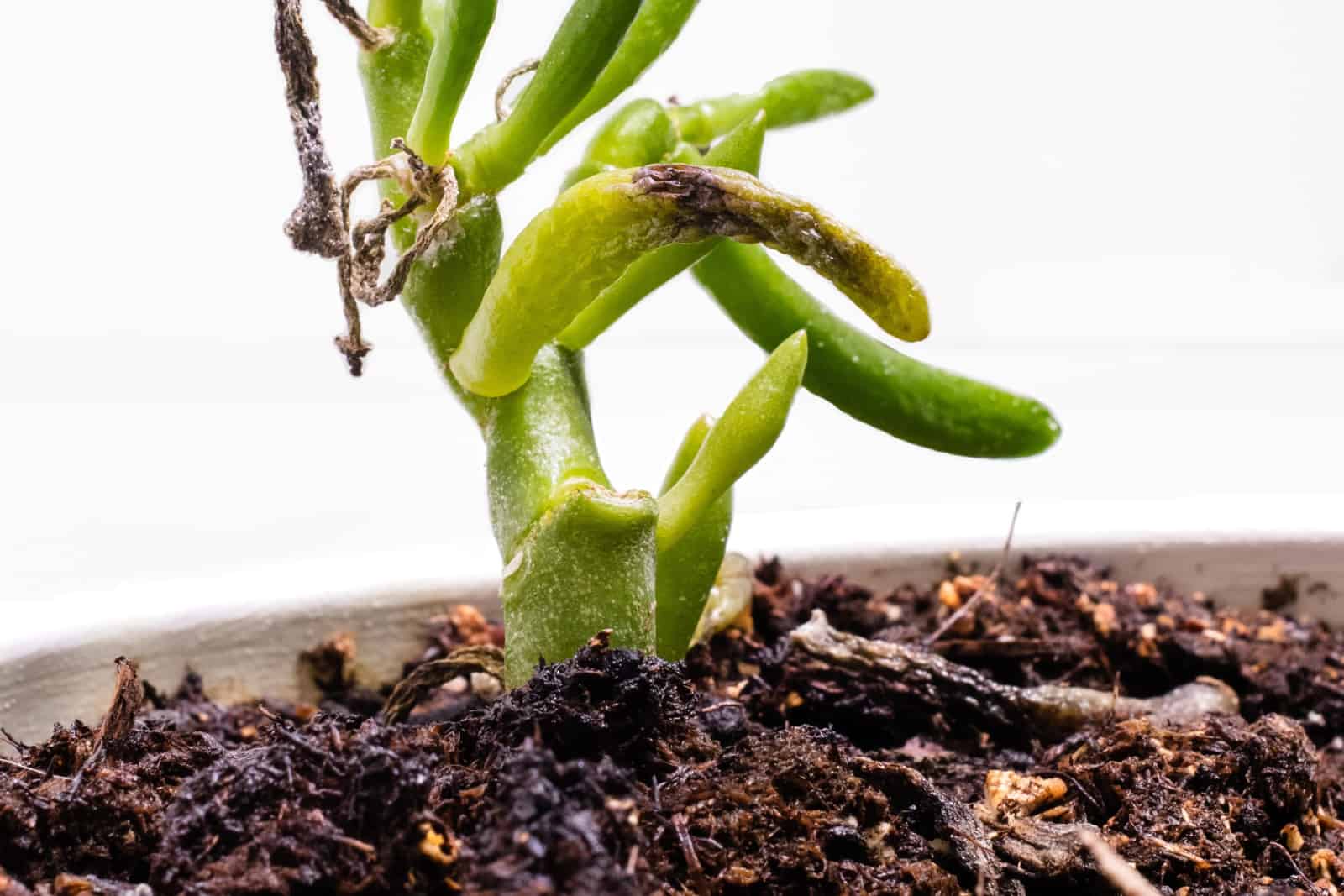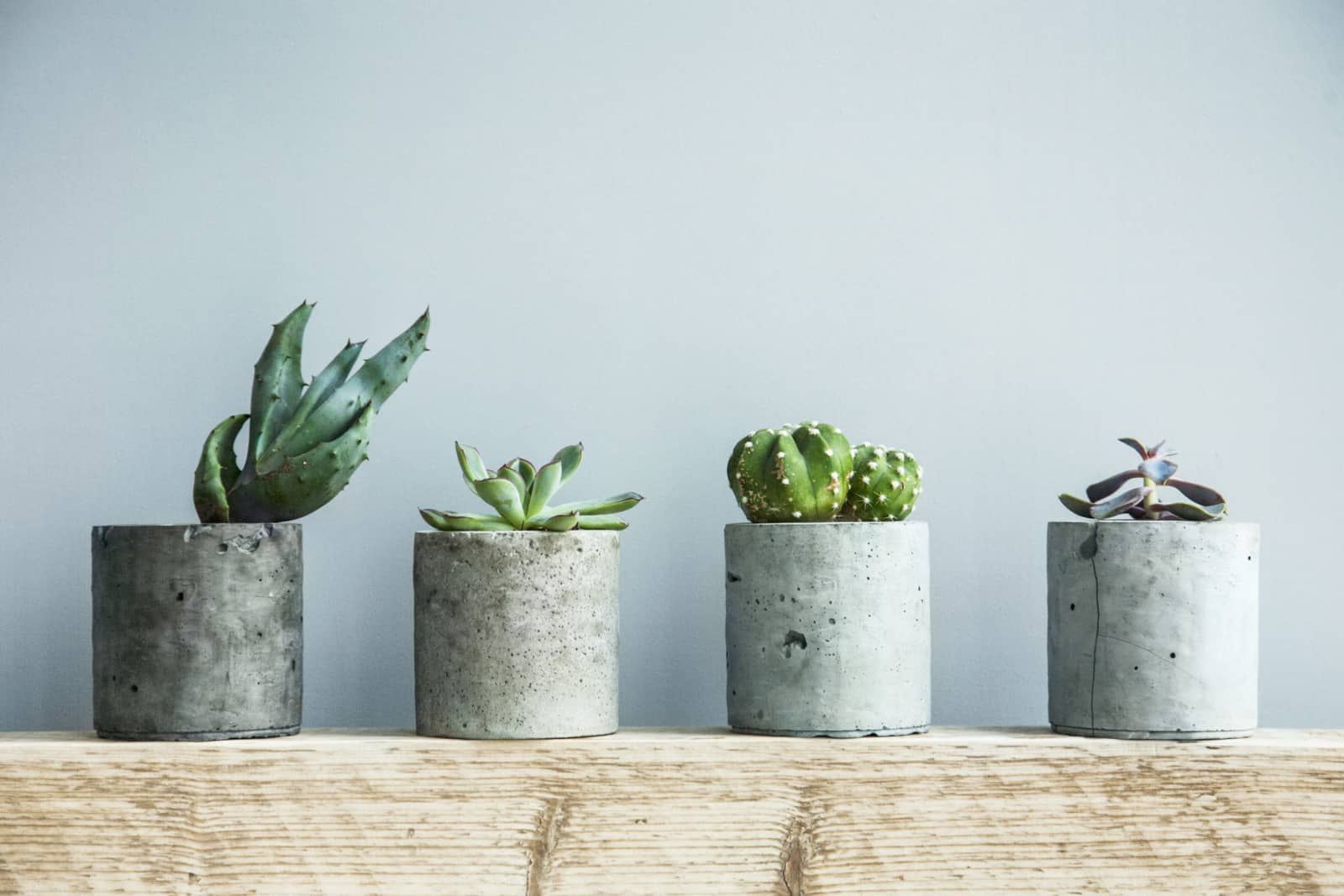Succulent plants are low-maintenance varieties perfect for beginners. But even though you don’t have to water, prune, and repot them so often, you still need to pay some attention to them.
The most common problem with these plants is legginess, which is mainly a sign that your plant doesn’t get enough light.
Of course, other things can lead to an etiolated succulent, and if you want to prevent it, you should meet all your plant’s requirements, especially when it comes to light.
We know that many gardeners wonder whether etiolation is dangerous to their plants, how to distinguish it from healthy growth, etc., so we’ll tackle these additional questions in the following article.
What Are The Signs Of Etiolated Succulents?
The main signs of an etiolated plant are stretched-out succulents, leaning, a pale and weak appearance, increased growth rate, and downward-pointing leaves.
However, if you follow your zebra plant care guide (or meet the requirements of any other succulent), you’ll keep their beautiful rosettes safe from stretching.
Succulent Stretches Towards Light Source
The main sign of etiolation is stretching towards the light source. It does seem odd at first since plants cannot grow without sunlight.
However, they extend their stems in search of more light, so you’ll notice that their limbs are growing upwards toward where the sun should be or on one side (where they sense the light source is).
Stretched-out succulents have larger gaps between rows of foliage in order to increase the surface area able to photosynthesize.
Leaning On One Side
Leaning of succulent plants to one side is another tell-tale sign of etiolation. If it doesn’t get enough sunlight, your green buddy will lean toward the nearest one.
Some succulents will slant due to their leggy stems, which have become too heavy for the plant. And if you don’t do something about it, the etiolated growth will lead to the shoot breaking due to its weight.
Fast Growth Rate
Succulents are usually slow-growing plants, so if you notice a rapid increase in their size, it’s safe to assume that they are etiolating.
And soon after, you may notice stretching out and leggy growth.
However, not all succulents grow as slowly as the ogre ear succulent, so take their average growth rate into consideration before doing anything.
Pale Leaves
Pale and yellow foliage is another sign that the light conditions for your succulent are far from ideal.
In low-light levels, succulents cannot produce enough chlorophyll, which is what gives the leaves their signature green color.
Furthermore, without this substance (and light), plants cannot engage in the process of photosynthesis properly, resulting in weak succulents.
Foliage Pointing Downwards
We all love the beautiful aloe or haworthia rosettes that point upwards, so it’s not hard to recognize that something’s wrong with your plant if they point in the opposite direction.
Lack of light (or any other cause that leads to legginess) will make your plant stretch toward the sunlight, leaving the bottom leaves facing downwards. This technique increases the surface area that can catch light and engage in photosynthesis.
This appearance is one of the earliest signs that your succulent is suffering from a pathological condition known as etiolation (along with the pale color of the foliage).
What Causes Succulents To Become Leggy?
Now that you know which signs to look out for, it is time to learn some of the most common causes of succulent etiolation.
Insufficient light, the direction it comes from, lack of hibernation, lack of growing space, and inadequate feeding are all things that will result in a leggy succulent.
All these things can be the reason why your succulent is dying, so don’t take them lightly.
1. Lack Of Sunlight
Bright light promotes the production of chlorophyll in plants and provides them with the energy necessary for photosynthesis.
If there isn’t enough direct sunlight for your bear paw succulent, for example, it will stretch out in the direction where it can sense it.
2. Direction Of Light
Another cause of leggy succulents is the direction from which the light comes. Perhaps you keep these houseplants in full sun, but you don’t turn them.
In that case, the entire plant will lean toward the light source and leave the opposite side underdeveloped.
3. Absence Of Dormancy
All plants, including succulents, require hibernation, and if you deny them that, they can react in various ways, including legginess.
For instance, if you keep your succulent in a warm location and water it frequently, it won’t be able to detect the lower light levels in winter. This will make it “think” it’s the growing season, and it’ll stretch toward the nearest light source in order to develop healthily.
And if you water it less frequently in the same situation, you’ll just dehydrate it and cause additional problems.
4. Small Pot
Almost all types of succulents are slow growers, so we don’t pay attention to their containers that often.
However, roots develop relatively fast, and when they crowd the pot they cannot absorb nutrients as effectively.
When this happens, the plant can stretch out to look for more sunlight in order to photosynthesize and produce more food to sustain itself.
Therefore, the ruby necklace succulent care guide (and any other plant care guide) includes repotting as a vital part of staying healthy (we’ll discuss this technique in more detail in the following section).
5. Underfertilization
It isn’t likely that an unfertilized succulent will become leggy, but it can happen. Just like with root-bound plants, there aren’t enough nutrients in the potting medium for your green buddy to develop healthily.
Therefore, your beautiful succulent will extend its leaves and stems in order to look for more light and solar energy to boost its photosynthesis and produce the food itself.
How To Treat Succulent Etiolation
Now that you know how to recognize legginess, and what causes it, it is time to learn how to treat this condition.
The main thing is to introduce your plant to more light, but if that doesn’t help, try adjusting its feeding, watering, and temperature, repot it, or choose a succulent that isn’t that light-sensitive.
Expose It To Direct Light
If your indoor succulent has been in lower light levels for a while, you cannot just move it to direct sunlight because that will only lead to sunburns.
Instead, introduce your plant to more light gradually. First, move it to its new location, leave it there for a couple of hours, and then put it back in its previous place.
Increase the amount of time it spends in its spot each day until your succulent can last there all day long.
Most succulents thrive in full sun, so try and keep them on east or south-facing windowsills, where they can receive direct sunlight without getting sunburns.
You can also keep them on a west-facing windowsill, but you should use a sheer curtain during the hottest parts of the day or move your succulent a few feet away from it.
Finally, remember to rotate your green buddies every once in a while so as to allow for equal sun exposure.
Use Grow Lights
If you don’t have any sunny windows in your home, you can always invest in some grow lights and watch those vibrant colors come back to your succulent.
Place the artificial lamp above your plant to ensure it gets equal exposure.
Adjust Watering And Temperature
If your succulent cannot recognize that the growing season is long gone because it is still warm and getting plenty of moisture, you might want to help it with that.
Move it to a slightly cooler location (but nothing too cold or you risk stressing it) and reduce watering to signal that the dormancy period has begun.
Repot It
Healthy succulents require repotting from time to time in order to prevent them from becoming root-bound and, in the worst-case scenario, leggy.
You can even grow your new plant in a succulent terrarium filled with well-draining materials.
But if you prefer regular pots or hanging baskets, you should repot your succulents approximately every two years during their growing season.
Choose a terracotta planter with potholes as they provide the best drainage. Make sure it is slightly larger than the previous one, but not too large or it will lead to waterlogging.
Then, put some potting medium in the bottom of the planter, add your succulent, and cover the roots with the substrate.
Water your plant thoroughly, expose it to plenty of light, and you’ll soon notice healthy new growth.
Adjust Fertilizing
Succulents generally prefer poorer soils, but you should feed them from time to time to ensure they have all the nutrients they need for healthy growth.
Use a fertilizer for cactus and succulent plants, and start applying it in spring when you notice new leaves appearing.
You can feed these fleshy plants once a month, but it depends on the strength of the fertilizer, so always follow the instructions on the package.
Dilute the fertilizer, and never use it during dormancy or you might end up burning the plant’s roots.
Choose Species With Lower Light Requirements
If you don’t want to constantly worry about the amount of light your succulent receives, you can simply find ones that adjust better to low-light levels.
For instance, aloe vera, the African milk plant, and the ponytail palm, etc., are some varieties that can tolerate less sunlight.
You can also introduce tall succulent plants to your indoor garden, but research their light requirements to keep them healthy.
If you’re looking for a new succulent, you might want to know that plants from the genera Echeveria, Crassula, Sedeveria, Graptosedum, etc., are more light-sensitive and susceptible to legginess.
Can You Fix An Etiolated Succulent?
Unfortunately, a leggy succulent won’t just turn back to normal after you introduce it to more light or adjust its other growing conditions.
If you want to get its shape back, you’ll have to prune it. But don’t worry, you can propagate succulents from those parts to get more new plants.
Also, if your etiolated succulent is completely leaning over to one side, you can remove the entire leggy part and replant it.
The old succulent will send out more healthy and dense shoots, and you can use the other one for propagation as it can grow new roots.
Is Etiolation Harmful To Succulents?
Generally speaking, etiolation is not dangerous for succulents and it doesn’t affect their health tremendously.
However, it changes the appearance of the plant and can lead to breaking of the stems, which isn’t desirable.
Even though etiolation is not harmful, its causes can have more negative effects on your plant’s health and lead to stunted growth, root burns, overwatering, etc.
Therefore, follow the care guide for your heartleaf ice plant, aloe vera, haworthia, echeveria, and any other succulent you may have in order to prevent them from getting leggy.
Etiolation vs Healthy Growth
The main difference between healthy growth and etiolation is the color. Healthy succulents have more vivid and bright shades, whereas leggy ones usually have paler leaves.
Another thing that can help you tell whether your plant is putting on healthy new growth or getting leggy is the growing speed.
Succulents are usually slow growers, and if you notice that your new plant is growing fast, you should check the amount of light, water, and fertilizer it gets, the temperature, whether it is root-bound, etc.
Final Thoughts
The first sign of an etiolated succulent is downward-facing foliage, and if you don’t recognize this issue in time, your plant will soon become pale and weak, leggy, and start to lean to one side.
The most common causes of this issue are lack of sunlight, absence of the dormancy period, not enough fertilizer, and small pots.
Luckily, you can prevent this issue by exposing your plant to enough direct sunlight, rotating it from time to time, and using grow lights. And if something else causes the etiolation, you can adjust watering, temperature, and feeding, or repot it.
Sadly, you cannot reverse the consequences of this problem, but you can prune the leggy parts and propagate them.
Finally, it’s good to be able to differentiate between etiolation and healthy growth so that you can save your succulents before the symptoms become irreversible.
Until next time!

